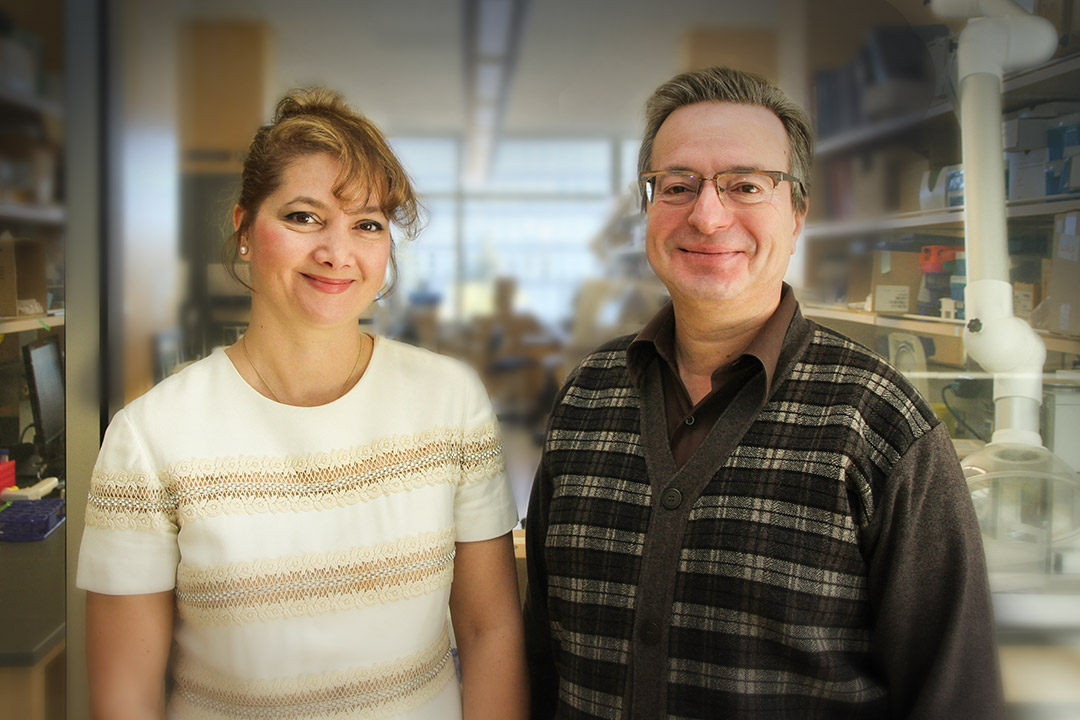The husband-and-wife team of Drs. Petros and Silvana Papagerakis are faculty members and professors in the Colleges of Dentistry and Medicine, respectively. Alongside a colleague from the University of Michigan, the team received $460,000 in funding from the U.S. National Institutes of Health, the first ever award received with principal investigators from the University of Saskatchewan and in the College of Dentistry. This will be used to fabricate a special dental retainer similar in shape to a teeth-whitening tray—designed to collect saliva samples over a 24-hour period.
From there, the samples are tested for melatonin, the hormone that regulates the body’s sleep-wake cycle—better known as our circadian rhythm. Think of it as the body’s internal clock that signals the brain and other organs when it’s time to go to bed. Other processes, such as cell regeneration, hormone production and brain wave activity, are also linked to our natural timekeeper.
Not surprisingly, a multitude of ailments and afflictions—ranging from cancer, diabetes, lung disorders, schizophrenia, Alzheimer’s, and Down syndrome, to obesity and coronary disease—are all linked to disrupted circadian rhythms.
But what’s causing this? At a macro level, societal changes ranging from dietary deviations and mental health issues, to irregular work hours and an increase in the use of technology—can trigger circadian disruptions.
“We know that the change in lifestyle has never been so dramatic as it has been in the last while,” said Petros, who also serves as the associate dean of research in the dental college. “But with the device, we can take the patients that have developed larger disruptions, and give them some things they can do to actually reset their clock.”
One particular source of disruption is the blue glow of a smartphone, which has been found to suppress melatonin in humans—a shift that Silvana is studying in oral cancer patients.
“What we’re seeing now are not more ‘traditional’ oral cancer patients,” she said. “It used to be predominantly male, old age, and people that have been drinking or smoking for years. Right now we see a shift to younger and younger patients.”
Another large cause of circadian disruption is irregular work hours. In 2007, the World Health Organization’s International Agency for Research on Cancer (IARC) declared shift work that disrupts circadian rhythms as “probably carcinogenic” to humans.
According to IARC epidemiological studies, those engaged in long-term night shifts are exposed to more light and experience sleep activity pattern disruption—both of which are likely to be linked to tumour development.
“We need night shifts—we are always going to need them, as a society,” said Silvana, adding that nearly one-third of the Canadian labour force does not work a regular day shift in industries such as health care, hospitality and transportation. “It’s just giving them the tool and the awareness.”
The team is in the process of patenting the retainer device, and Silvana sees potential in it as a personalized therapeutic tool, possibly linking it to a smartphone to monitor saliva and recommend the optimal time to take medication. “If you have something that
is time dependent, we can conduct the device to release drugs at a given time, or to measure a biomarker,” she said. “Then the biomarker can be linked to your device saying at what level your marker is at that time.”
Additionally, there is interest in the device from local stakeholders.
“We want to use it here in the dental clinic—that’s the goal—and maybe in the sleep clinic,” said Petros. “We’ve also talked to the health region and the hospitals here. They find it very interesting. They both told us that there is an increasing number of medical leaves that are fatigue-related.”
This study is the foundation of a larger initiative on campus towards precision health and technology, led by Petros and Silvana.
